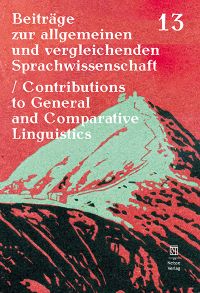An insight into language fossilisation of the speaking skills of clil and non-clil teachers: similarities and differences
An insight into language fossilisation of the speaking skills of clil and non-clil teachers: similarities and differences
Author(s): Katarzyna Papaja, Marzena Wysocka-NarewskaSubject(s): Language studies, Language and Literature Studies, Applied Linguistics
Published by: Oficyna Wydawnicza ATUT – Wrocławskie Wydawnictwo Oświatowe
Keywords: fossilisation; CLIL teachers; non-CLIL teachers; speaking skills; spoken discourse
Summary/Abstract: The design of the texts that characterise the linguistic landscape of a university is essentially determined by the needs and expectations of the communication participants using the academic space, who today are often characterised by a relatively high degree of linguistic and cultural diversity. It is not unusual to find Polish-language texts in the linguistic landscape of a university in Poland – such as the University of Opole, which is the focus of this study – where the majority of students and employees have a Polish linguistic and cultural background. However, since the UO is located in a region with a diverse linguistic and cultural tradition and is also claimed by people of different languages and cultures as its direct users, it is also nothing unusual that this landscape also includes texts that are realised in languages other than Polish. This raises the question of what forms these texts take and what functions can be ascribed to them and – following on from this – whether a certain connection can be established between the respective languages and the discourse functions of the signs appearing in them. The answers obtained in turn form the basis for considerations on the extent to which the individual languages correlate with the history and present of the university and its current actors. The aim of the paper is to discuss CLIL and non-CLIL teachers’ language fossilisation in terms of speaking. Firstly, there is a brief overview of fossilisation, focusing on its definition and scope. Secondly, the spoken discourse of CLIL and non-CLIL teachers in the classroom is described. Thirdly, there is a discussion of current research and the data collected through a questionnaire conducted among CLIL and non-CLIL teachers in Poland. This shows that slight differences in terms of language repertoire have been found between CLIL and non-CLIL teachers, placing the former at the forefront due to the strategies they tend to use frequently and the language areas they do not consider to be difficult or problematic at all.
Journal: Beiträge zur allgemeinen und vergleichenden Sprachwissenschaft
- Issue Year: 2024
- Issue No: 13
- Page Range: 187-205
- Page Count: 19
- Language: English

